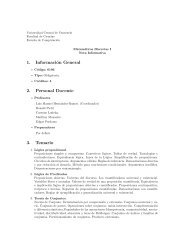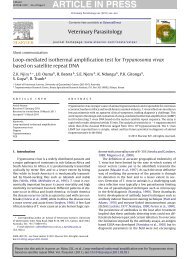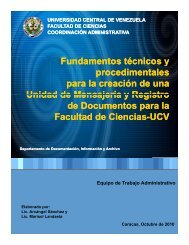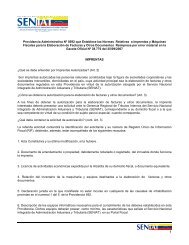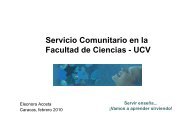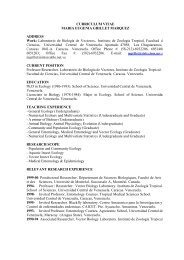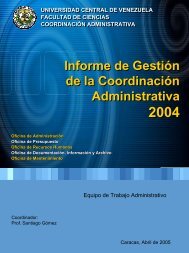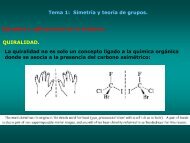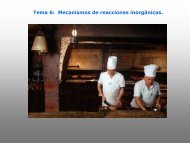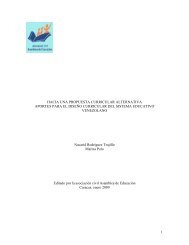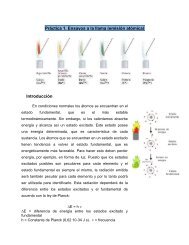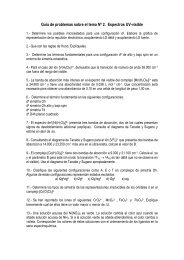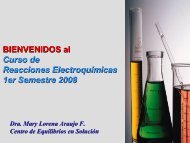Collecting and Preserving
Collecting and Preserving
Collecting and Preserving
- No tags were found...
You also want an ePaper? Increase the reach of your titles
YUMPU automatically turns print PDFs into web optimized ePapers that Google loves.
wings carefully with a fine brush or with the tip of a smallfeather. The descaled wing may then be stained, if desired,in eosin-Y or in an aqueous solution of Mercurochrome fora few to several hours <strong>and</strong> then washed again. The wing isthen ready for mounting as described here, or it may beallowed to dry on a slide, then placed under a cover slip,<strong>and</strong> the cover slip ringed with fingernail polish or ringingcompound to hold it in place.Wings not needing descaling may be removed froma fresh specimen or one that has had a drop of householdammonia (containing detergent) placed at the base of thewing <strong>and</strong> allowed to st<strong>and</strong> in a closed receptacle for aboutan hour. The wing may be removed with finepointedforceps by piercing the body cuticle surrounding the wingbase <strong>and</strong> then pulling the wing loose. In this way, one maybe assured of obtaining the complete wing, even with basalsclerites if desired. The wing is then wet with 70 percentethanol <strong>and</strong> placed in plain water for about 10 minutes tosoften it. It is often desirable, if the wing is from a driedspecimen, to place it in water that is then carefully heateduntil it barely starts to boil. This will aid in removing airfrom the larger veins. While the wing is in the water,carefully remove any dirt that may be present with a finebrush, but avoid removing fine hairs <strong>and</strong> setae. Alsoremove any unwanted parts of body cuticle <strong>and</strong> muscles atthe base of the wing.Then place the wing for about half a minute in 95percent ethanol while adding a few drops of Euparal (orbalsam) to a slide. Remove the wing from the ethanol <strong>and</strong>immediately place it in the Euparal (or balsam) on theslide. Position the wing as desired, turning it over ifnecessary <strong>and</strong> making sure that its basal part is wellstretched out. Alternatively, especially with very delicatewings, it is usually better to arrange the wet wing on thebare slide first, then pour the mounting medium on top.Carefully apply a cover glass, touching it to one side of theEuparal first at a slight angle from horizontal to avoidentrapping bubbles. Press the cover glass down on thewing carefully to exp<strong>and</strong> it as much as possible <strong>and</strong> toforce bubbles out of the basal veins <strong>and</strong> elsewhere. Thencure the slide in a warm oven overnight or in the open,clean air for a few days. Always excercise caution whendealing with recently mounted slides. While the mediummay appear dry at the edges, the interior of the slide mayremain liquid for some time <strong>and</strong> tilting or placing the slideon its side may result in movement of the cover slip.4.3 - Mounting Larvae of Diptera, Coleoptera,Lepidoptera, <strong>and</strong> Other Groups.The study of the immature stages of many insects isof great importance for identification purposes, but specialtechniques are usually needed because of their soft cuticle.Immature insects of most groups are seldom suitable forTechniques <strong>and</strong> Toolspreservation in a dry condition. A method given here forpreparing dipterous larvae may also be used for immaturesof some other groups. Dipterous larvae, especially those ofthe higher Diptera, have mouthparts, a cephalopharyngealskeleton, anterior <strong>and</strong> posterior spiracular structures, analplates, cuticular spicules, <strong>and</strong> other features that areimportant for their systematic study, but these parts usuallymust be examined at high magnification <strong>and</strong> requirespecial treatment. The larvae of Diptera, Coleoptera,Lepidoptera, <strong>and</strong> many other groups are best killed inboiling water because it leaves them in good condition forcritical examination.For cursory examination of the internalcephalopharyngeal skeleton, place the larva with no morefluid than will adhere to it in a dissecting dish. Pierce thecuticle in a few places near the anterior end of the larva<strong>and</strong> apply a few drops of pure liquid phenol there. Becareful not to get any phenol on your skin; wash withwater if you do. In a short time the tissues will become asclear as glass. The larva may be returned to 75 percentethanol after examination, when the tissues will againbecome opaque.For more detailed <strong>and</strong> permanent preparation oflarvae, place the larva in water in a dissecting dish <strong>and</strong> cutthe cuticle with fine dissecting scissors along one side,starting close to the anterior end, passing below the lateralspiracle, <strong>and</strong> continuing almost to the posterior end. Thenplace the larva in an NaOH solution <strong>and</strong> boil as describedon page 38. When the larva is well macerated, remove thebody contents, almost separate the posterior spiracular areafrom the remainder of the skin, <strong>and</strong> pull thecephalopharyngeal skeleton a short way out of the body.Place the skin in 95 percent ethanol while adding a fewdrops of Euparal on a slide. Then put the skin in theEuparal, opened outward so that the cephalopharyngealskeleton with the mouth hooks lies away from the skin <strong>and</strong>the posterior spiracular area lies with both spiraclesupward. Apply the cover glass <strong>and</strong> carefully press it intoplace. This should give a clear view under high magnificationof the cephalopharyngeal skeleton in lateral view, theanterior spiracles, all structures of dorsum <strong>and</strong> venter ofone side, anal plates, <strong>and</strong> posterior spiracles. The last,often somewhat domed or on conical protuberances, maybe distorted, but the sunray hairs <strong>and</strong> relationships of onespiracle to the other should be easily observed.As with the genitalia, the larval skin is sometimesbest preserved in glycerin in a microvial.Other parts of the insect body, such as antennae,legs, <strong>and</strong> palpi, may be mounted on slides in Euparal in thesame manner as described for the genitalia, wings, <strong>and</strong>larvae.45



